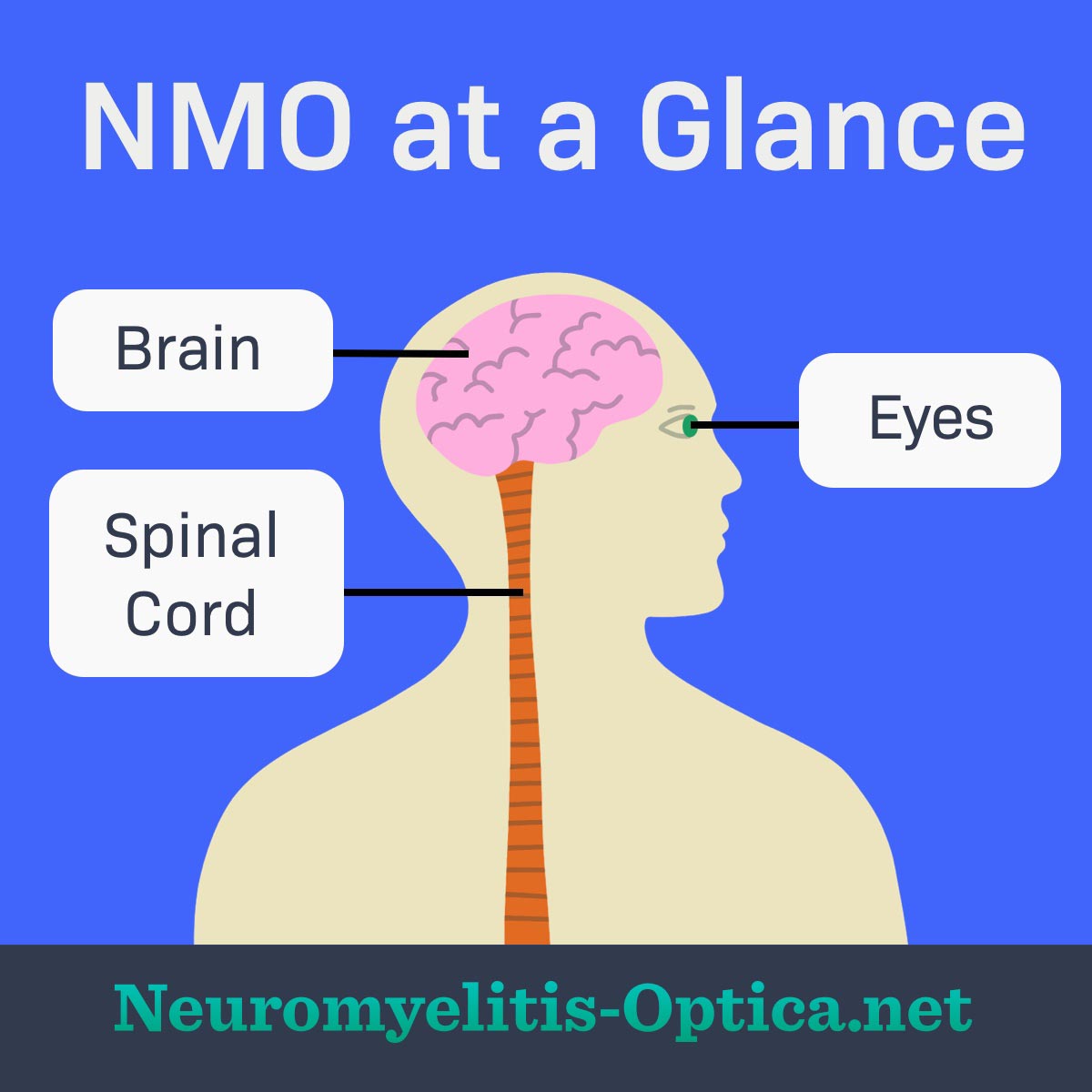Progression of NMOSD
Reviewed by: HU Medical Review Board | Last reviewed: September 2021 | Last updated: May 2024
Neuromyelitis optica spectrum disorder (NMOSD or NMO) is a rare inflammatory disease of the central nervous system (eye nerves, spinal cord, and brain). NMOSD is sometimes also called neuromyelitis optica or NMO.1
Patterns of NMOSD
There are 2 patterns of NMOSD: monophasic and relapsing. Doctors assume every person has relapsing NMOSD, even after a single attack.2
Monophasic NMOSD
- About 5 to 10 percent of cases
- A single attack that lasts 1 to 2 months
- Affects men and women equally2
Relapsing NMOSD
- Ninety to 95 percent of cases
- Much more common in women than in men
- Periodic flares with some time in between2
Progression
The chance of recurrence of disease activity after a first attack is greater than 90 percent. Attacks in NMOSD can be devastating. Outcomes vary widely among people, but the condition is still considered potentially devastating. Left untreated, early and severe disability is common.3,4
Demyelination and NMOSD attacks
Nerve fibers in your brain, spinal cord, and eye have a protective coating called myelin. Damage to this layer is called demyelination. Conditions like NMOSD are demyelinating because they damage this protective layer.5
When this layer is damaged, nerve signals can slow or stop. This leads to brain and nerve problems.5
How often do the attacks occur?
After the first attack, NMOSD follows an unpredictable path, and remission can vary. Attacks can last weeks to months. Symptoms may last off and on for years. They may also be temporary and can fully or partially resolve, most often after a course of treatment. However, this may not be the case for everyone. Reactions to treatment are highly unpredictable.2
When untreated, relapsing NMOSD relapses on average every 7 months. However, it can also relapse more or less often. Those who are on treatment may have a relapse about every 15 months.2,6
What do the attacks look like?
Generally, NMOSD symptoms begin suddenly. While symptoms may be temporary, each attack is damaging to the nerve fibers. Some people appear to recover fully after an attack, while others do not.2
Figure 1. NMOSD Target Areas
Eyes
The optic nerve is a bundle of nerve fibers. It is the communication cable between your eyes and your brain. Optic neuritis occurs when inflammation damages the optic nerve.7
Symptoms of optic neuritis may include:2,7
- Sudden eye pain or headache – Usually, this is made worse with eye movement.
- Problems with vision or complete loss of vision – This is usually in 1 eye but can affect both eyes. It can include partial or complete blindness, problems seeing different colors, blurred or tunnel vision, or poor depth perception.
Spine and muscles
Transverse myelitis occurs when inflammation damages the spinal cord. It is defined by symptoms and signs of nerve problems in the motor (movement) and sensory (sensation) tracts of the spinal cord.8,9
Transverse myelitis can cause a variety of symptoms. The most common symptoms include:9
- Arm and leg weakness
- Pain in the lower back, down the arms or legs, or around the belly
- Abnormal sensations, such as burning, stinging, or numbness
- Bowel and bladder problems, including an urgent need to use the toilet, loss of bowel or bladder control (incontinence), or constipation
Brain stem
Some people with NMOSD may develop nerve damage in the brain. Vomiting, nausea, and hiccups that are hard to control (intractable) may occur if the brain stem is affected. This is known as area postrema syndrome (APS). Between 16 and 43 percent of people with NMO have this syndrome. Outcomes vary depending on the amount of damage to the brain.3
Will it get worse or better?
When faced with a diagnosis of NMOSD, you will likely want to know if the disease will get better or worse over time. NMOSD affects everyone differently. The unpredictable course of disease makes it hard to know what will happen over time. New damage to the brain, eyes, and spinal cord during attacks can make the symptoms of NMOSD worse over time. Within 5 years, half of those diagnosed with NMOSD require a wheelchair.10
Some factors can predict a worse outcome in NMOSD, including:3
The number of relapses within the first 2 years after symptoms beginThe severity of the first attackAge at onset of diseaseOther autoimmune diseases